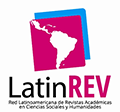Submissions
Submission Preparation Checklist
As part of the submission process, authors are required to check off their submission's compliance with all of the following items, and submissions may be returned to authors that do not adhere to these guidelines.- Authors must have an ORCID registration code.
- The article is free of plagiarism, including self-plagiarism.
- The article is original and unpublished, and has not been submitted to other journals simultaneously.
- The text complies with the stylistic and bibliographic requirements outlined in the Style and Formatting Standards contained in the Guidelines for Authors.
- The article includes the section “Data availability” in which the authors report whether and where the data set used is available, in case of original research. See indications in the Guidelines for Authors.
- The Authorship Responsibility Statement, completed and signed by all authors, is attached.
- A curriculum vitae of the authors is attached.
- A Word file of the manuscript with the author's data is attached.
- A Word file of the manuscript anonymized as indicated in the Guidelines for Authors is attached.
Research articles
They are original and unpublished papers, with a length between 6,000 and 8,000 words (including abstracts, references, notes, tables and figures) and a limit of up to 35 references. For literature review articles, up to 50 references are accepted. These collaborations are peer-reviewed in a double-blind system.
Bibliographic reviews
They should be between 1,500 and 3,000 words in length. These collaborations are evaluated by the Editorial Board.
Dossier : Museums in the digitization society
Articles should not exceed 8,000 words (including abstracts, references, notes, tables, and figures), with a limit of 35 references. Manuscripts addressing any of the following topics will be welcome:
- Institutional communication by museums through social media.
- Innovative museum campaigns linking transmedia strategies.
- Museums and AI: uses and applications for content creation and dissemination.
- Studies on museum audiences in relation to new technologies.
- Virtual reality and augmented reality in the museum environment.
- Accessibility and expanded and complementary narratives.
- Digital museums, mobile museums, and cybermuseums.
Copyright Notice
If the manuscript is accepted, the authors agree to transfer the copyright to the journal according to the Creative Commons Attribution 4.0 International License (CC BY 4.0), open access system, with the authors retaining responsibility for the content and opinions expressed, which do not reflect the views or scientific policy of the journal.
The authors hereby declare that their work does not infringe on the rights of third parties and that they are the sole holders of the property rights being transferred, allowing them to dispose of these rights without any limitations or encumbrances. They also declare that, in creating the work subject to this transfer, they have not violated any third-party intellectual property rights. Consequently, the authors are obliged to guarantee the authorship and originality of the work’s content to the journal and ensure the peaceful exercise of the transferred rights. The authors will be responsible for any claims made by third parties regarding intellectual property rights over the work, thus exempting the journal from any liability. They will also be liable for any damages that may be caused to the journal due to such claims.
The article’s content will not be subject to any other rights by any other publication, nor has it been previously published. If tables or figures from other publications are reproduced, written permission from the authors or copyright holders will be provided as appropriate. In all cases, the APA guidelines for presenting tables and figures will be followed.
Privacy Statement
The names and email addresses entered in this journal will be used exclusively for the established purposes, and they won't be provided to third parties or used for other purposes.













